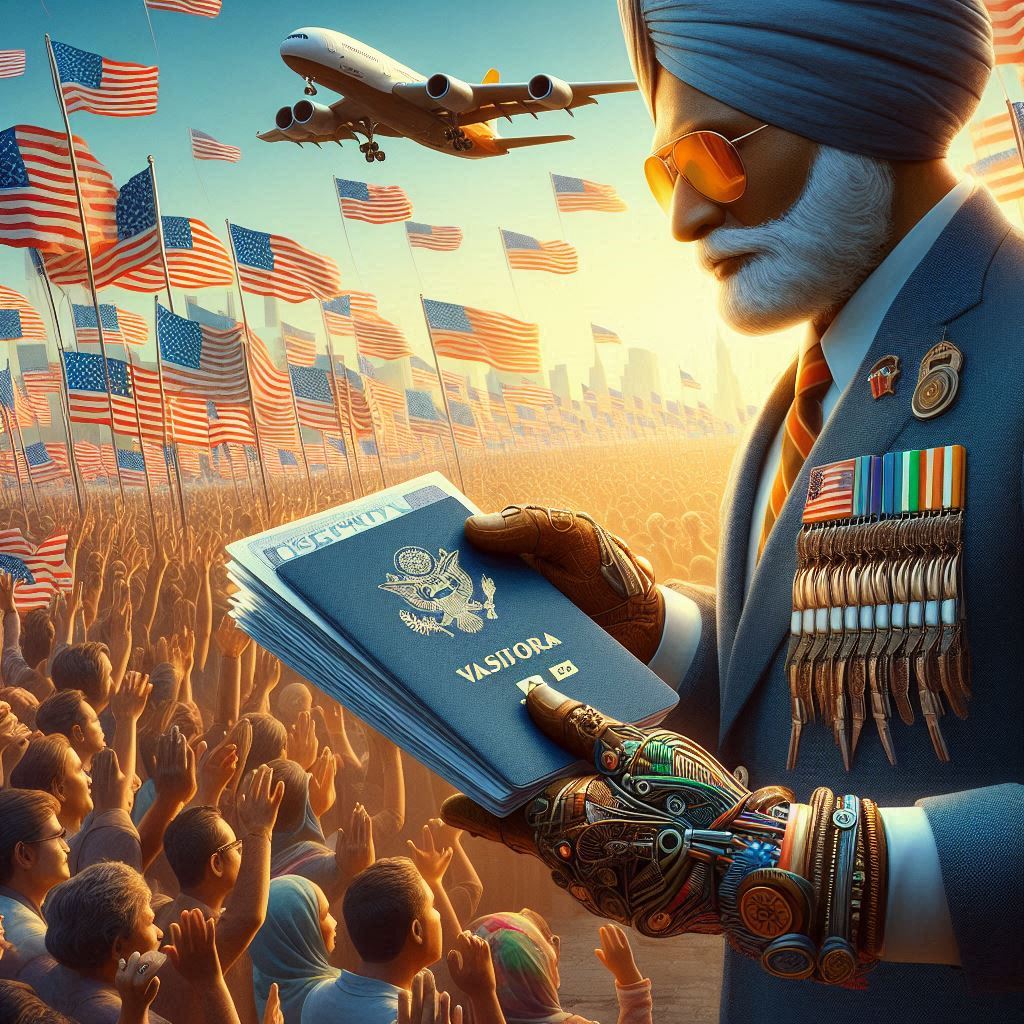Introduction to the surge in U.
S. visas for Indians
The recent surge in U.
S. visas granted to Indians has sparked excitement and speculation about the deepening ties between the two nations. With more Indian citizens than ever before being welcomed to the United States, it’s evident that a significant shift is underway in diplomatic relations. Let’s delve into the reasons behind this uptick, explore its impacts, and consider what this means for both countries moving forward.
Reasons for the increase in U.
S. visas
The surge in U.
S. visas for Indians can be attributed to a variety of factors that have converged to facilitate an increase in travel between the two countries. One key reason is the growing economic ties between India and the United States, leading to more business opportunities and collaborations that necessitate travel. Additionally, the cultural exchange programs and educational opportunities available in the U.
S. attract many Indian students and professionals seeking to broaden their horizons.
Furthermore, improved diplomatic relations have paved the way for easier visa processes and increased collaboration on various fronts including technology, healthcare, and defense. The expansion of digital platforms has also simplified visa applications, making it more convenient for Indian citizens to navigate through the process efficiently.
This increase signifies a deepening bond between India and the U.
S., highlighting a mutual interest in strengthening ties across multiple sectors.
Impact of the visa surge on U.
S.-India relations
The significant increase in U.
S. visas granted to Indian nationals has had a profound impact on the relationship between the two countries. It has facilitated greater people-to-people exchanges, fostering cultural understanding and strengthening bilateral ties. Through increased travel opportunities, individuals from both nations have been able to engage in business collaborations, academic pursuits, and tourism activities.
This surge in visas signifies a deepening of economic and diplomatic relations between the United States and India. It reflects the growing recognition of India as an important global partner and highlights the mutual benefits derived from enhanced cooperation. The ability for more Indians to visit the United States for various purposes not only enriches their personal experiences but also contributes to cross-cultural dialogue and knowledge sharing.
This uptick in visa issuance serves as a testament to the evolving dynamics of U.
S.-India relations, showcasing a commitment to fostering closer bonds between citizens of both nations.
Benefits for Indian citizens
As the number of U.
S. visas issued to Indian citizens continues to rise, it brings along a multitude of benefits for individuals seeking opportunities abroad. One major advantage is the chance to explore new educational prospects in renowned American universities and colleges, opening doors to world-class education and research facilities.
Moreover, obtaining a U.
S. visa allows Indian professionals to pursue lucrative job opportunities in various sectors such as technology, healthcare, finance, and more. This not only enhances their career prospects but also contributes significantly to their personal growth and skill development.
Furthermore, having access to a U.
S. visa enables Indian travelers to experience diverse cultures, landscapes, and lifestyles across different states in America. It offers them the opportunity for personal enrichment through exposure to new perspectives and ways of living.
The surge in U.
S. visas for Indians signifies a promising future filled with possibilities for those looking to expand their horizons beyond borders and embrace new experiences overseas.
Challenges and criticisms surrounding the visa process
Navigating the U.
S. visa process can be a daunting task for many Indian citizens. One of the main challenges is the lengthy processing times, which can delay travel plans and cause frustration among applicants. Additionally, the complex documentation requirements often lead to confusion and errors that may result in application rejections.
Critics argue that the visa fees are too high, especially for multiple entry visas, making it financially burdensome for individuals who need to travel frequently for work or family reasons. The interview process itself has also received criticism for being subjective and inconsistent, leading to concerns about bias or discrimination in decision-making.
Furthermore, there have been instances where legitimate travelers have faced visa denials without clear explanations, adding to the ambiguity surrounding the process. These challenges highlight the need for transparency and efficiency in visa procedures to ensure a smoother experience for all applicants.
Future projections and predictions for U.
S.-India visa relations
As we look ahead to the future of U.
S.-India visa relations, there are promising signs pointing towards further growth and cooperation between the two nations. With the increasing global interconnectedness and mutual interests in various sectors such as technology, education, and business, it is likely that the number of visas issued to Indian citizens will continue to rise.
The ongoing dialogue between U.
S. and Indian officials on streamlining visa processes and enhancing bilateral ties bodes well for smoother visa applications and approvals in the coming years. As both countries recognize the benefits of fostering strong people-to-people connections, efforts to facilitate travel for tourism, work, or study purposes are expected to be prioritized.
With advancements in technology simplifying application procedures and expedited processing times becoming more common, the future looks bright for individuals seeking to travel between the U.
S. and India for various reasons. By building upon existing frameworks and addressing any remaining challenges together, both nations can pave the way for even stronger visa relations moving forward.
Conclusion: The importance of fostering strong ties between the two countries
As we witness a record number of U.
S. visas being granted to Indians, it is evident that the relationship between the two countries is only growing stronger. This surge in visa approvals signifies the deepening ties and increasing opportunities for collaboration between the United States and India.
By facilitating easier access for Indian citizens to visit or work in the U.
S., both countries stand to benefit from cultural exchanges, economic partnerships, and technological advancements. The visa surge not only enhances people-to-people connections but also paves the way for more extensive cooperation in various fields like education, business, and innovation.
Despite some challenges and criticisms surrounding the visa process, it is essential to acknowledge the positive impact it has on fostering goodwill and understanding between nations. As we look towards the future, projections indicate a continued growth in U.
S.-India visa relations, with more streamlined processes and increased opportunities for cross-border engagements.
In conclusion: nurturing strong ties between India and the United States through enhanced visa facilitation is crucial for promoting mutual prosperity, innovation, and global leadership. As both nations continue to strengthen their partnership through increased mobility and collaboration, they pave the way for a brighter future built on shared values and aspirations.


